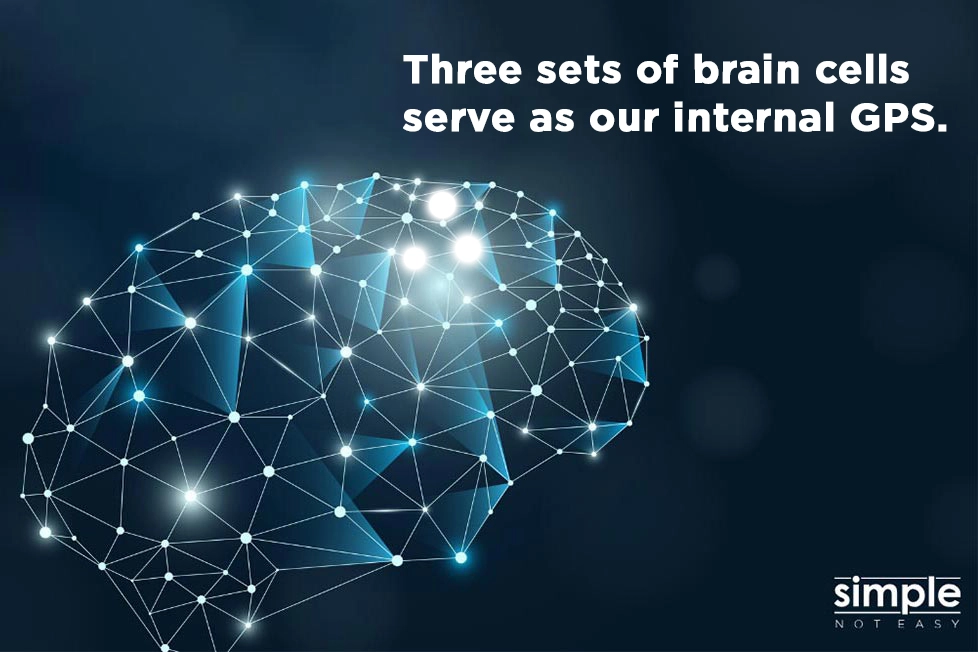Certainty In Self-Positioning

Navigating personal and professional relationships can be at times confusing and even frustrating. In such moments, many among us have wished for a map, a compass or even a GPS to provide reliable assistance with the next steps. After considering such dilemmas for many years with my coaching clients, I recently discovered impressive research that supports a self-positioning tool that clients can quickly learn and then practice independently. First, a summary of the research, and then a report on how it strengthens an approach called CoreSelf Mapping.

An article in the journal Frontiers of Behavioral Neuroscience in 2015 reported on the significance of ground-breaking lab research done by Dr. John O’Keefe and colleagues Edvard and May-Britt Moser. Their work demonstrates that a part of the brain of all mammals called the hippocampus functions as an “internal GPS.” They showed how three specific sets of brain cells fire to indicate where the creature is in the environment, what the parameters of its current environment are and in what direction it is pointed as it begins to move. Dr. O’Keefe began his research on this subject in the late 1960s. O’Keefe and the Mosers were awarded the Nobel Prize in Medicine and Physiology in 2014. Their work explains the most basic process by which humans and other species know where they are, and how they navigate to where they want to go.
In their February 2020 article in the journal Scientific American titled “In Search of the Brain’s Social Road Maps,” Matthew Schafer and Daniela Schiller review the implications of Dr. O’Keefe’s work for “people maps.” They summarize: “Maps let us simulate possibilities and make predictions, all within the safety of our own heads. The mental shortcuts we can so readily conjure up might have their basis in the same system that allows us to figure out a detour around a traffic jam…Mental maps do more than help us find shortcuts through physical space — they enable us to navigate life itself.”
Understanding a connection between the hippocampus-based internal guidance system and our conscious decision-making process increases our understanding of the neurological basis of positive self-positioning; in fact, we do have an “internal GPS” capable of providing “turn by turn directions” just like the mechanical version in our phone or car. Our biggest challenges are to know that it is, in fact, available and how to switch it on.
When we are in a difficult situation with definite limits on our choices for the next best move to make, our hippocampus is monitoring energy levels, most important priorities, and possible practical choices. One reason that we are not immediately aware of the best move to make was discovered by Dr. Ernest Hilgard in research done at Stanford University in the 1970s. Using hypnosis, he was able to interview what he called the “Hidden Observer” in his subjects. He audio-taped the Observer’s comments and played them back to the now fully conscious subjects. They recognized the positive benefit of the Observer’s suggestions and said, in fact, those ideas had occurred to them before but had been dismissed or ignored.
Dr. Hilgard’s research led him to the conclusion that the Hidden Observer was hidden behind an “amnesia barrier” blocking the individual’s awareness of the process. Nevertheless, under hypnosis, when the Observer was asked about its point of view, it provided calm, objective and positive information. Dr. Hilgard’s research was published in a book called Divided Consciousness (John Wiley and Sons, 1977). Perhaps because the hypnotherapy technique was not commonly utilized in clinical practice, Dr. Hilgard’s discovery of the Hidden Observer did not become widely known.
Clinical work done in my psychotherapy practice over the past decade has demonstrated that completion of a one-page CoreSelf Map allows individuals to complete two exercises that utilize the self-positioning capability of the hippocampus to create awareness of positive behavioral choices in daily life.
The first step begins with the subject drawing a triangle locating “self” at one of the vertices with two other important individuals at the others. Creating a triangle which describes a current personal or professional situation activates their Hidden Observer. The subject’s awareness of possible behavioral choices becomes more focused as they consider issues of closeness and distance between these three individuals.
Without being coached on the clinical benefits of observing triangles, my clients report that describing the triangular relationship reduces their tension level as they work on the CoreSelf Map exercise. The questions of “Where I am in this situation?” and “Where do I want to be?” come into awareness and begin to be processed in a way that is unlikely to trigger anxiety because at that moment the person is not confronting an emotional dilemma; at that moment their choice is only which direction to move. As Dr. O’Keefe’s work so clearly establishes, humans are wired for that challenge and do it almost effortlessly.

In the next phase of CoreSelf Mapping, clients locate themselves precisely along the radius of a circle when the center is labeled “core,” described as calm and certain, and the outside edge is labeled “rim,” described as upset and reactive. When asked to choose “where they are” and “where they want to be,” the client reliably chooses particular points closer to the core of the circle as their goal.
The next step is equally simple but not as easy to achieve. Clients complete four very brief paragraphs which include a written narrative describing their situation, resources available to them and previous good faith efforts to resolve the challenges in their situation. The final step is the opportunity to write down possible “best next steps,” and to articulate a “Real Question” for their own consideration or to address to others. The client’s ability to reach a level of new awareness of positive options and questions that must be explored to resolve their situation is extraordinarily high.
CoreSelf Mapping clients report that the CSM process “switches on” their Hidden Observer and allows them to record positive behavioral strategies in their own words. They report a high degree of investment in following through on plans based on this experience. They also report that these strategies might have occurred to them previously, but they were not systematically recorded or consistently acted upon. We have a growing body of evidence that the CSM process activates a “Navigator” capability that leads to the creation of sustainable plans. The written plans can be sequential on the same theme and very specific progress in a chosen direction can be recorded.
Timothy Preston and Jonathan Thomas formed a partnership in 2017, Simple. Not Easy LLC., to develop CoreSelf Mapping as a tool to be used by professional advisors to assist their clients in creating solutions to challenging situations in many professional and personal contexts. They built upon Ernest Hilgard and John O’Keefe’s breakthrough research to make CoreSelf Mapping applications available to individuals and professionals. To learn more, explore their book, try CoreSelf Mapping or become an advisor your self.
About the Authors
Jonathan Thomas, MSW
Whether at the potter's wheel, coaching medical professionals and teams, or in his private counseling practice, Jonathan Thomas has spent his life molding, shaping and creating something beautiful and new.
Tim Preston
As a successful serial-entrepreneur and angel investor, Tim Preston has spent the majority of his life learning, overcoming, and creating, from blank pieces of paper: self, spaces, teams, and businesses.
Together, Jonathan and Tim founded Simple. Not Easy., LLC, a company that developed CoreSelf Positioning™ tools to help companies and individuals to slow down and align energy levels, values, and actions in order to formulate their best next steps.
Learn more about Jonathan, Tim & CoreSelf Positioning.